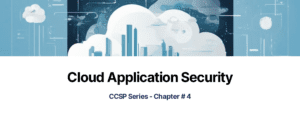Overview
Dive deep into the sphere of Cloud Application Security with this expertly structured presentation designed for organizations navigating the complexities of cloud security. Understand the shared responsibility between you and your cloud provider, explore the necessity of secure practices across identity/access management, networking, and infrastructure within the Software Development Life Cycle (SDLC), and grasp how a Secure Software Development Life Cycle (SSDLC) is imperative for your organization’s cloud migration journey.
Key Learning Outcomes
- Recognize the importance of a security-focused culture for SSDLC, detailing executive support and training attributes.
- Comprehend the critical fundamentals of cloud development and the shared responsibility model’s role in securing applications.
- Identify the common pitfalls in cloud security and the strategic role of leadership in circumventing them.
- Explore key frameworks such as the NIST Secure Software Development Framework and OWASP’s SAMM for improving SSDLC processes.
- Contrast cost implications of early security integration in the SDLC against post-development mitigation.
- Understand the different stages and methodologies within SDLC, including Waterfall, Agile, and DevOps, and their security implications.
- Learn how applying SSDLC significantly mitigates risk, reduces costs, and ensures compliance with data security standards.
- Gain insights into addressing common cloud vulnerabilities and how CSA’s Top Threats can help in prioritizing security risks.
- Delve into threat modelling frameworks like STRIDE and DREAD and their application in secure development.
- Absorb the importance of training, secure coding practices, software configuration management, and versioning to maintain secure cloud applications.
- Examine critical testing types like SAST, DAST, and IAST for software assurance, and the augmentation through manual testing for risk assessment.
- Understand the role of Multifactor Authentication (MFA/2FA) in enhancing IAM within cloud environments.
Conclusion
Conclude your journey through Cloud Application Security with a comprehensive understanding that implementing SSDLC is not just necessary but foundational to establishing robust application security in the cloud. Equipped with the understanding of the significance of cultural change, and familiarity with key security frameworks, methodologies, and threat models, you are now prepared to steer your organization towards advanced cloud security measures tailored to your unique architectural needs.
Call to Action
Enhance your organization’s cybersecurity strategy by viewing or downloading this insightful presentation. For more information and resources on information security best practices, visit our InfoSec Knowledge Hub. Remember to reference our website appropriately for any use of this material.


